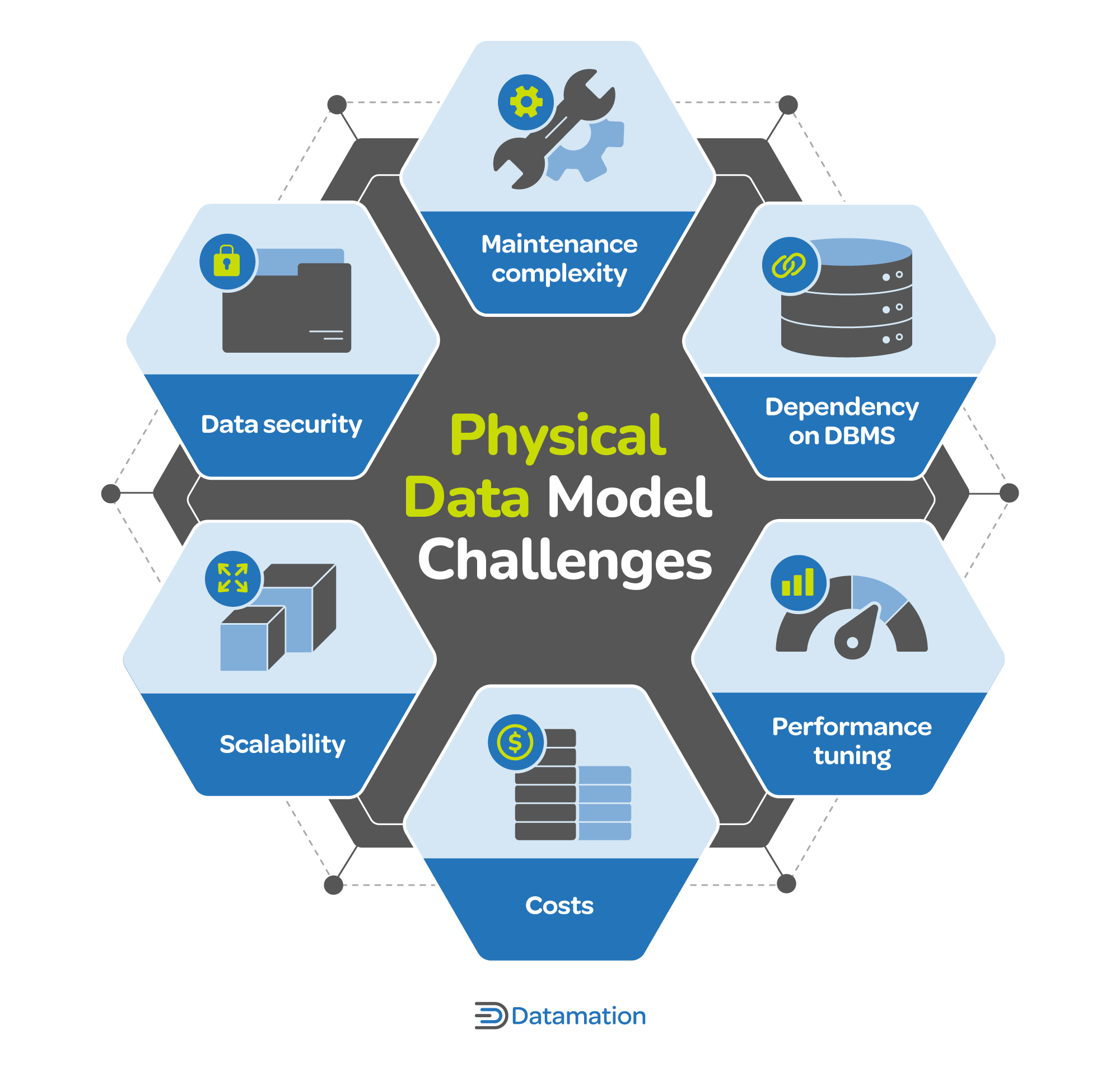

Datamation content and product recommendations are editorially independent. We may make money when you click on links to our partners. Learn More.
A physical data model represents the structure of a database, defining how data is stored, organized, and accessed at the physical level. It provides a detailed view of the database schema, specifying tables, columns, data types, relationships, indexes, and constraints. As such, the physical data model (PDM) serves as a framework to guide developers in creating and optimizing the actual database, taking into account storage considerations, performance improvement, and specific features of the database management system (DBMS).
Table of Contents
A physical data model transforms broad business requirements into a specific, well-organized database structure tailored to the capabilities of the DBMS for which it is designed. By outlining the details of how to organize and store data, the PDM ensures efficient data storage and smooth system operation for tasks such as information retrieval and transaction handling.
Physical data models encompass critical details such as data types, indices, and constraints, serving as a comprehensive guide for implementing the database.
The PDM facilitates the conversion of entity types to tables and attributes to columns identified in the logical data model. This includes establishing primary keys (PK)—which uniquely identify each record in a table—and determining foreign keys (FK), which establish relationships between tables by linking to the primary key of another table, as shown in the diagram below.

Fig. 1 – Physical Data Model Diagram (Source: GIS&T Body of Knowledge)
The PDM makes sure that the database aligns with the business needs, translating conceptual ideas into a tangible and functional structure. Physical data models also address the technical aspects of database implementation, unlike logical data models, which focus on the high-level, business-oriented view of data.
Table design, normalization, indexing, data types, and concurrency control are some of the fundamental techniques that form the core of physical data modeling. They bring a solid foundation for designing efficient and maintainable databases capable of meeting data integrity and performance requirements.
Conceptual, logical, and physical data models represent distinct yet interrelated stages of the database system development process. Each stage serves a specific purpose. It’s worth noting that these three models are not directly comparable—rather, they represent progressive stages in the database design process, as follows:
When used in the right scenarios, physical data models offer a wide range of benefits. Here are some of the most common advantages.
Because a physical data model specifies the structure of tables, data types, and lengths, increasing data storage efficiency, it helps guarantee that the database consumes space wisely, reducing unnecessary overhead.
By strategically implementing indexes, partitioning large tables, and clustering related data, physical data models boost database performance. These adjustments expedite data retrieval, resulting in faster query execution times and better system responsiveness.
In physical data models, integrity constraints such as primary keys, unique constraints, and foreign keys are implemented. These constraints help safeguard data accuracy and reliability stored in the database and prevent anomalies.
The PDM allows for the effective partitioning of large tables, enabling the database to handle a growing volume of data while maintaining performance. It streamlines data management and scales as data requirements increase.
By employing strategies such as thoughtful indexing and well-planned design choices, physical data models accelerate data retrieval, contributing to an overall enhancement in the effectiveness of database queries.
The PDM acts as a visual aid, helping developers, administrators, and business users understand the database design more easily. It fosters effective communication and shared comprehension of how data is structured and organized.
Normalization techniques used in the PDM break down tables into smaller, related components, minimizing redundancy. This leads to a simplified and consistent data representation within the database.
Since physical data models align with the specific features and capabilities of the DBMS environment, it secures optimal utilization of system resources within the chosen technology stack.

While physical data models bring a myriad of benefits, they also come with their own set of challenges. Addressing these challenges requires a combination of technical expertise, careful planning, and ongoing collaboration between stakeholders involved in the database management process. Here’s a look at some common challenges associated with physical data models.
Physical data models can become complex, particularly in large and evolving databases, making routine maintenance tasks challenging. Altering structures and adjusting indexes may require careful planning and execution.
The PDM is often closely tied to a specific DBMS, and substantial modifications are necessary when transitioning to a different DBMS. This limits adaptability and poses challenges during technology changes.
Balancing optimization in a physical data model is tricky because it involves finding the right trade-offs to make sure the database performs well for different operations, like reading and writing data. Striking this balance is intricate and may not always yield optimal results for all use cases.
Maintaining data security is crucial to protect sensitive information in physical data models. However, providing accessibility for authorized users with stringent safeguards against unauthorized access involves careful consideration of encryption, access permissions, and overall security measures, which is complex.
Scaling a database with a complicated PDM can be difficult. Accommodating the growth of data and user load may require adjustments to hardware, partitioning strategies, and overall system architecture.
Costs present a multifaceted challenge in physical data models, covering initial implementation, ongoing maintenance, and scalability efforts. Upfront expenses include hardware, software licensing, and expertise for database setup. Infrastructure costs for servers, storage, and networking, as well as ongoing maintenance tasks, contribute to operational expenses. On top of that, scaling to accommodate data growth and employing data security tools incurs supplementary costs.